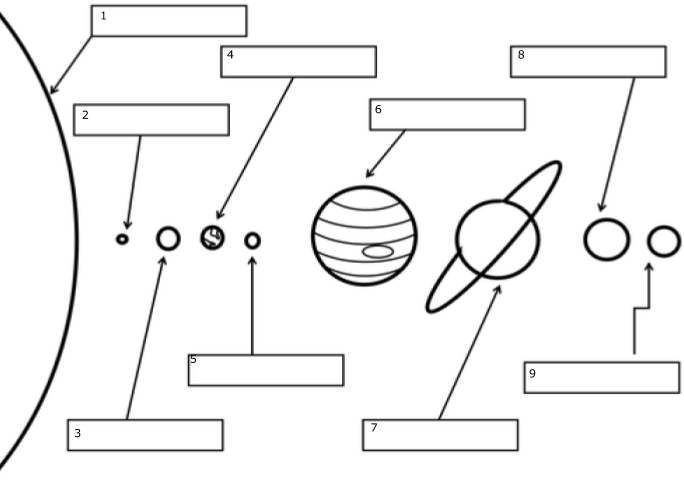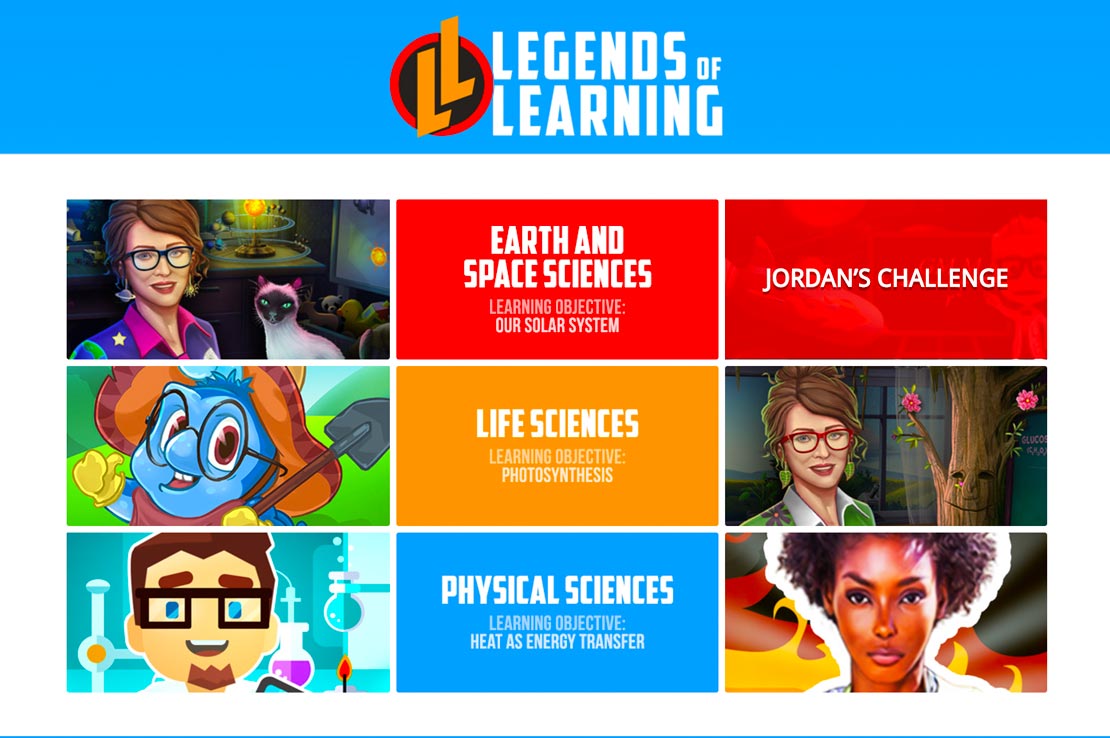Our Solar System Lesson Plan
When you’re teaching students about space, Earth’s immediate surroundings are a good place to start. Cover the sun, other planets, their moons, and asteroids with the Our Solar System Learning Objective.
It includes a lesson plan created by science teachers, which you can download in PDF form or view below.
Lesson Plan: Our Solar System
NGSS Standard
ESS1.B-1: The solar system consists of the sun and a collection of objects, including planets, their moons, and asteroids that are held in orbit around the sun by its gravitational pull on them.
Objective
Students will be able to:
- Explain the role of gravity in the solar system.
- Explain the relationship between mass and gravity.
- Predict the patterns of movement of objects in our solar system.
- Accurately produce a 2D model of objects with varying masses that illustrates the relationship between gravity and mass.
Time Required:
85 minutes
Materials Needed
- Teacher computer with internet access
- Projector/Smartboard
- 1 computer/laptop/iPad/Chromebook per student with internet access or BYOD (students can Bring Your Own Device)
- Our Solar System and Gravity handout (attached)
- 15 magnets (varying sizes are acceptable and encouraged if magnets are not the same size)
- A magnetic object, such as a paperclip or the leg of a student’s chair
Teacher Preparation
- Create a 30-minute playlist in Legends of Learning with the following games found in the Our Solar System learning objective (in order):
- Around and Around (15-minute playtime)
- The Sun, Moon and Stars: Patterns of Apparent Motion (11 minutes)
- Create a 10-minute playlist in Legends of Learning with 5 assessment questions from the Our Solar System learning objective.
- Make copies of Our Solar System and Gravity Worksheet (1 per student).
- Gather materials for the Engage portion of the lesson.
Engage (15 minutes)
The teacher will show a magnet to the class.
- The teacher will use the magnet and a paper clip to show how the paper clip is attracted to the magnet.
- The teacher will ask, “Is the magnet attracted to the paperclip, or is the paperclip attracted to the magnet?”
- Allow students time to think before accepting any answers
- Teachers should employ a random way of calling on students if no volunteers are available.
- The teacher may guide/prompt students to the understanding that
the paperclip is attracted to the magnet. - Using the magnets, and working in pairs or triads, the students
should explore the classroom for other objects that are attracted to the
magnet. Ask students to use different distances between the magnet
and the object and to note the results. - Students should also use magnets of two different sizes to observe
the results. - Once students are done (after 5 minutes), they should reflect (verbally or with written text) on the following prompts:
- What types of objects were attracted to the magnet? Were the objects
that were attracted to the magnet larger or smaller than the magnet? Is there a
relationship between size and the amount of attractive force?
- What types of objects were attracted to the magnet? Were the objects
- The teacher will ask, “Is the magnet attracted to the paperclip, or is the paperclip attracted to the magnet?”
- The teacher will say “The activity you just did was modeling gravity. Gravity is a force of attraction. Why do you think I used a magnet to model gravity?”
The teacher should employ a randomized process for calling on students. Only a couple (1 or 2) answers should be allowed at this point due to time. The teacher should say, “Gravity is a force of
attraction. Today you will learn how gravity is used to keep objects in our solar system in constant, predictable patterns of motion, and the relationship between mass and gravity.”
Explore (20 minutes)
- Have your students sign in to Legends of Learning and enter your teacher code.
- Launch Playlist 1 for your students.
- As students complete Around and Around, students should fill out the Our Solar Sys>em and Gravity Handout; question #5 will be done during the Elaborate section of the 5E.
- Assist students as needed during gameplay, and pause the playlist if you need to address content or questions to the entire class.
- The teacher may need to sit with struggling students in a group of no more than 4 to facilitate learning.
Explain (25 minutes)
- The teacher will review the answers from the Our Solar System and Gravity handout.
- The teacher will relate student knowledge to the demonstration at the beginning of class.
- It is important to remind students that the force of magnetism and gravity are not the same. However, to model the process on a small, observable scale, magnets were used to model gravity.
- Why was a magnet used? A magnet was used to simulate a semi-attractive force between objects.
- What objects in our solar system were being represented by the magnet? Any object in the solar system that has mass can be represented by a magnet.
- Why was the paperclip attracted to the magnet? The magnet is bigger than the paperclip.
- How does the relationship of size affect gravity? The bigger an object is, and the more mass it has, the more gravity it will exert on other objects.
- Why does the larger magnet attract the smaller magnet? The larger magnet has a larger “force”.
- Students should be able to answer the following:
- Why are the planets kept in constant, predictable motion? The Sun’s gravity.
- Why do all the planets orbit the Sun? The Sun is the most massive object in our solar system. Larger objects with more mass will attract more objects.
Elaborate (10 – 15 minutes)
- Have students watch the video on gravity.
- The teacher can clear up any misconceptions about gravity and mass at this point in the lesson.
- Students complete question #5 on the Our Solar System and Gravity handout.
Evaluate (10 minutes)
- Launch Playlist 2 for your students. When they finish the assessment questions, any time left is free play.
- Analyze student results to determine what concepts need to be a focus for reteaching.
Our Solar System & Gravity
Name: _________________________
Directions:
While playing the second game in Legends of Learning called Around and Around, use what you learn to answer the questions below.
1. Label the planets in the correct order. Please note: The image is not to scale.
2. What are some of the components of our solar system that astronomers have studied? List some in the space provided.
- A.
- B.
- C.
- D.
3. What is the relationship between gravity and mass?
- A. The more mass an object has, the more gravity it will exert on another object.
- B. The more mass an object has, the less gravity it will exert on another object.
- C. The less gravity an object has, the more gravity it will exert on another object.
- D. The less gravity an object has, the less gravity it will exert on another object.
4. If two objects in space are close together, which of the following is true?
- A. Distance has no effect on gravity.
- B. The farther apart objects are will cause them to have greater gravity.
- C. The closer together objects are will cause them to have greater gravity.
- D. Gravity in space depends on how much light is being emitted from the objects.
This portion should be completed during the Elaborate portion of the 5E lesson.
5. Imagine that the solar system consisted ONLY of Jupiter, Mars, and Earth. How would Jupiter’s gravity affect the orbits of Mars and Earth? Draw and label your answer in the space below.




